Jury rig to Itajai
How Groupama would perform was something of an unknown prior to the start of this Volvo Ocean Race. They had a well funded campaign, the right tool in the form of a design from Juan K, who’s boats have won the last two fully crewed round the world races. France is obviously one of the world’s leading nations when it comes to oceanic racing and although Groupama has the least number of crew with Volvo Ocean Race previous, it includes some of France’s most highly capped offshore hands, many of whom have more offshore racing miles than even the Volvo Ocean Race veterans.
So having comfortably won leg four into Auckland and then leading for the majority of leg five, up until their unfortunate dismasting off Uruguay, it is safe to say that Franck Cammas and his team have collectively got the hang of this (to them) new form of the sport they are so familiar with.
Most capped Volvo Ocean Race sailor on board the green VO70 is naturalised French Irishman, Damian Foxall, now on his fourth race following campaigns with Tyco, Ericsson 1 and Green Dragon. Foxall has also won the first Barcelona World Race non-stop around the planet with Jean-Pierre Dick on Virbac Paprec 2, broken the non-stop around the world record with the late Steve Fossett on Cheyenne and won the Oryx Quest (another non-stop lap) on Doha 2006.
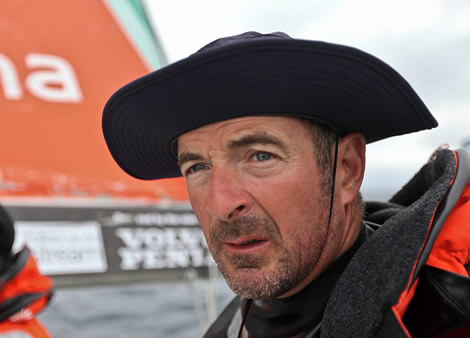
According to Foxall, the school is still out as to why they dismasted on this last leg: “We still don’t know exactly what broke. It looks like wear and tear on some section of the rigging, but that is not to say that our Carbonlink rigging - which is a fantastic product - was at fault. It could have been a fitting or a spreader that caused one of the Ds to go. We honestly don’t know.”
Foxall discounts it having been a tube failure – VO70 masts are overspecced under the class rule to prevent them breaking. He says there is an outside chance the forestay broke, but reckons that is unlikely.
The intricate video set-up on board in theory allows at any the last three minutes of footage to be saved, but while they hit the button in time, unfortunately it didn’t work. “That would have been very useful for post-dismasting analysis, so we just have to use our own memories,” says Foxall. “We have guys from Carbolink [rigging] and Lorimar [spars] here to look at the different bits and they are still working on a conclusion at the moment.”
One factor that is likely to have contributed to Groupama’s dismasting is that her mast is unique in the Volvo Ocean Race fleet in having three spreaders, rather than four. This was to exploit the VO70 rig's ‘box rule’ which in particular limits tube section shape, minimum weight for the spar and also a minimum height for its centre of gravity. Going three spreader and their choice of going for Carbolink solid carbon fibre rod for the standing rigging, were to minimise weight in the rigging and overall windage.
“In our own in-house decisions getting ready for this race, we would say ‘we know this is going to be faster, lighter and stiffer, but do we take 100% of the gain in pure performance or do we split some of that gain between increasing the performance and increasing the reliability?’ Sometimes you say ‘okay, this product is lighter and faster, let’s increase the safety co-efficient at the same time as increasing the performance.”
Both the rig and the rigging were areas where Foxall says they erred on the side of safety. “It wasn’t an area where we were especially planning to push it in terms of security margins, so it was a big surprise to see the rig coming down.”
But going for three spreaders over four does make for bigger panels along the length of the mast, although this was compensated for in the lamination spec for the tube, and it also creates more load in the rigging, spreaders and spreader roots. “So that adds up to a bit more fatigue in the long run, but we have had a pre-planned program of changing the rigging out, but obviously something got fatigued.”
At the time of the incident Groupama had just recovered the lead from Puma and they were sailing upwind under full main and J2 headsail. Fortunately as they were effectively in the lee of South America, there wasn’t much swell. Foxall was down below at the time of the dismasting, but says the rig fell to leeward and then swung over the back of the boat.
“Especially in the early stages, it is hard to know what is safe and what isn’t and what is going to give next, how is the rig moving on the deck and what are the danger sectors that you need to avoid, etc,” advises Foxall of best procedure during a dismasting. “You do need to have someone who is standing out of the process and watching out for everyone.”
They had to stabilise the broken section of the mast, which was hanging over the stern in the water, while one of the spreaders was in the process of gouging a hole in the aft deck. They removed the wheels and the pedestal handles to prevent them from being snapped off as the broke section of mast moved around. Fortunately after tidying up all the rope, cables and sails, they cut the top of the mast away from the stump and as it dropped on to the deck, it levered the end of the spar out of the water. After about two hours of work they had managed to recover every part of the rig and set about motoring towards Punta del Este.
There were no injuries apart from Kiwi bowman Brad Marsh who managed to slice his wrist with a knife accidentally as they were tidying up the rig.
Once into Punta del Este they set about erecting a jury rig that would allow them to complete the leg and pick up the points for a third place finish. With the rig having broken just above the first spreaders, they ended up replacing this stump with the upper section of rig.
“There was still 18m or so left, so our design office in Lorient took all the bits and came up with a jury rig plan that was very efficient,” says Foxall. They fitted a set of unbroken spreaders to this rig, tidied up a few broken areas and stepped the jury rig using halyards and cables and some SK90 and 78 they had lying around. “It was a work of art!” says Foxall. “A one spreader rig with Ds and back up shrouds and diagonals and runners and a two jibs and a three reefed main.” They sailed up to Itajai under triple reefed main with the use of genoa, staysail and storm jib forward.
During the process of saving the rig, they were forced to cut through the mainsail and as this was trashed in the process, the International Jury has since permitted Groupama an additional sail card to replace their mainsail, something which is allowed under race rules for just this eventuality. “That helps a lot, otherwise it would start to have an impact on our sail program,” says Foxall.
The replacement spar arrived from Rotterham around three days after the boat reached Itajai. This was their original mast, also with three spreaders, from which their race mast was developed. In Brazil there has been some detailing work to bring it up to spec.
Groupama has also had her fair share of hull issues during the race. On lifting the boat on to the ship in the Maldives during leg two, they discovered a crack in the hull. “One of the battery boxes had created a hard spot and created a crack in the external skin,” says Foxall. “We didn’t notice that until we put the boat on the ship in Mali, so we were fairly lucky that it hadn’t developed further and it didn’t slow us down.”
The battery box is located in the centre of the boat alongside the longitudinals. “Its on a panel which moves quite a lot,” says Foxall. A laminating job was carried out on the exterior of the hull when the boat was still on the ship after it arrived in Sharjah, prior to the final sprint into the UAE stopover. In Abu Dhabi the battery box was tapered down to reduce the hard point.
Then while passing the Bay of Islands on leg four as they were in the lead, so they suffered some delamination in the bow section. This, the crew feel was due to a glancing blow with something in the water. “We believe we hit something,” says Foxall. “There was certainly a lot of debris in the water when we came past Cape Point and in the miles leading up to it. It was in the crash bow section, so that was fairly lucky. I supposed it was damaged where it should be, aroun the crash bulkhead.” So Foxall confirms that there have been no structural problems with the hull, although others within the Volvo community question this alleged collision...
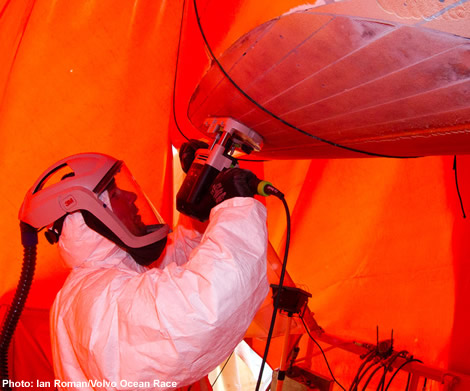
As to the reasons for the high attrition rate in this race, Foxall believes it is down to the latest generation boats being significantly faster than the 2008-9 VO70s. Groupama as a team have witnessed first hand the difference in speeds between Ericsson 4, the 2008-9 race winner which they own, and their latest boat, which Foxall reckons to be 0.5-1.5 knots across the board. He also compares the performance of the new boats with that of Team Sanya, which raced as Telefonica Blue three years ago and has since had her rig updated. “She was a fast boat on a lot of points of sails, unfortunately for them they are really struggling to stay in contact for very long.”
When it comes to reaching, Groupama is another step ahead again over the opposition in this race, Foxall believes.
The reason for this performance increase, Foxall feels, is partly down to developments in the hull design and particularly the use of North 3Di in the sails and the latest generation rigging. “The sail plan is a lot stiffer than it was with 3DL and all that adds up to a stiffer, higher performance package. Plus, the boats are going faster and therefore the loads are higher. On the other hand these products in their own right are also potentially more reliable. Our 3Di sails have been absolutely fantastic. The number of sails on this race has been reduced and to date, touch wood, we haven’t had any problems. Some boats have had problems with 3Di and might have different opinions, so new products that are stiffer and lighter are not necessarily any less reliable. But put them into a chain, then at some stage if you just keep pulling you find the weak link. Certainly the slamming and some of the damage we are seeing has moved even further back now where some of the back panels are fairly flat and move around a lot. Puma had that a bit of that in the last race and Telefonica in this race. We have too in the battery box area, so it is not just limited to the bow section.”
So with even less give in both the sails and rigging, combined with the performance increase and an ever more competitive fleet, any one or a combination of these features may have caused this race’s higher than expected attrition.
But Foxall reiterates what others have been telling us that the principle element in conceiving these boats is knowing which are the areas where you can push the envelope and which you can’t. “That is the whole balance that all the teams are trying to get right and when you play the edge sometimes you step onto the wrong side. It is always going to be possible at this end of ocean racing, in any boat in any class, to sail the boat so hard that is just breaks up. That is part of ocean racing, knowing when to lift the pedal and knowing when to push.”
As to the prospects for the next time race, Foxall says that he favours whatever must be done to put more boats on the start line.
With the boats now back into the Atlantic it feels like they are getting close to the home straight, but in reality there are still four legs left to race and still 150 points, or half of the total available, remaining to be won. Had Groupama not dismasted and they had won leg five leaving Telefonica to take third, they would now be within five points of the Spanish race leader. Instead they still hold second, but are 20 points adrift of the Spanish VO70 and now have Camper and Puma both breathing down their neck, respectively just 8 and 14 points behind them.
“We are still positioned in second, still within striking distance of Telefonica and they are nowhere near as untouchable as they might have seemed to be in the early stages of the race,” says Foxall. “All the boats have closed down the gap in terms of performance. And we know that the next leg could be a good one for us and we know we have the potential to win the race overall. There is still a lot of miles to do and there is a lot of crashing and burning and classic catastrophies and highlights to go through as well - that is all part of the race as well, like it or not. It is going to be an interesting race all the way through to Galway.”

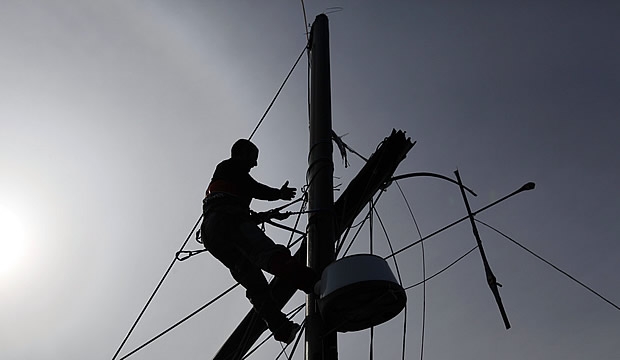
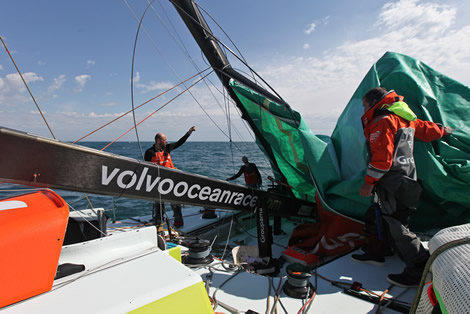
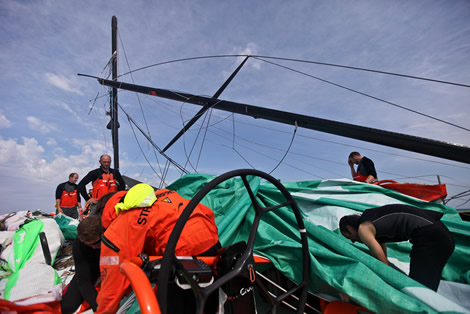
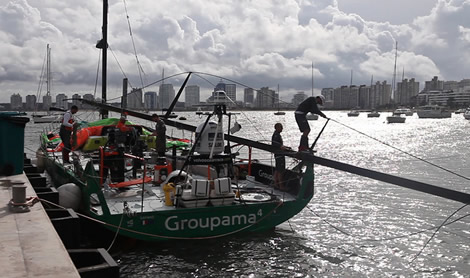
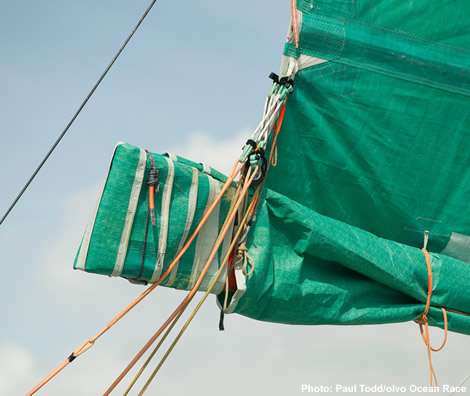
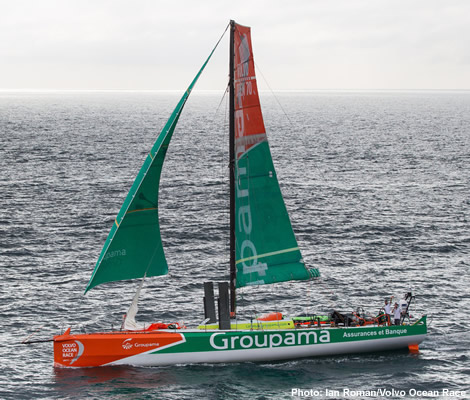
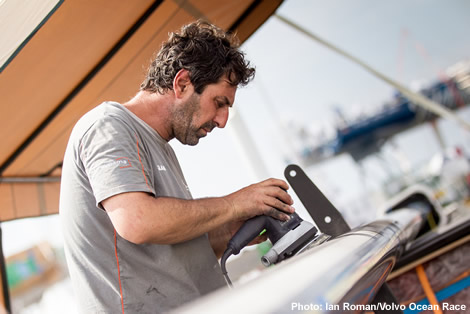
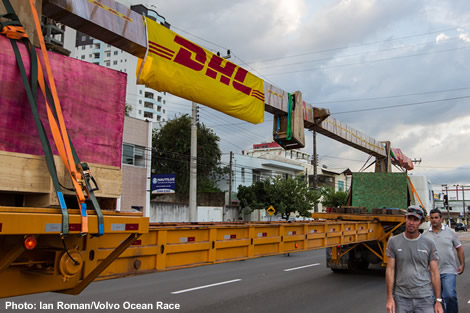
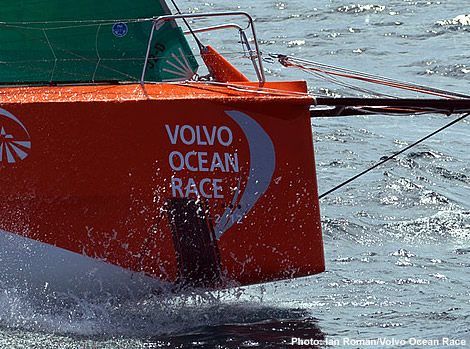
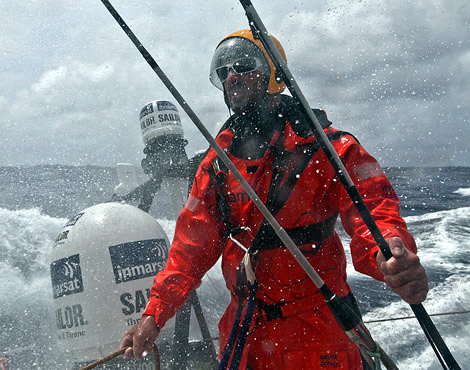









Latest Comments
Jesus Renedo 20/04/2012 - 07:52
Excellent article, its good to read first hand information after so many PR text saying the same everywhere.Add a comment - Members log in